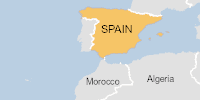RSS feed source: Global Disaster Alert and Coordination Systems (GDACS).
School of Civil and Environmental Engineering (CEE) is a leading school for Sustainable Built Environment. The key objective is to support efforts to spearhead tertiary education, advance research innovations, and provide professional services. For more details, please view https://www.ntu.edu.sg/cee
We are looking for a post-doc research fellow to work on a newly awarded project on spatial concurrence risk analysis of precipitation using a network-based approach. The position is initially for 12 months, with the possibility of extension for up to 6 months or longer, subject to budget availability. The role will focus on conducting research, preparing project reports, assisting with grant proposals, and engaging in collaborative research activities.
Key Responsibilities:
• Conduct research in data analysis, methodology development and applications
• Coordinate the preparation of project reports and deliverables
• Publish findings in peer-reviewed journals and conference proceedings
• Collaborate with other researchers on
Click this link to continue reading the article on the source website.


